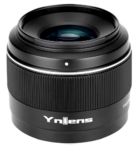Sigma 50mm F/1.2 DG DN | A
Standard prime lens • Digital era
- Announced:
- · March 2024
- Production status:
- ● In production
- Country of design:
- · Japan
- Original name:
- · SIGMA 50mm 1:1.2 DG DN A
- Class:
- · Ultra-fast full-frame standard prime lens
- · Professional model (Top class)
- · Travellers' choice
- System:
- · Leica L (2015)
Abbreviations
| DG | The lens is designed for 35mm digital cameras but can be also used on APS-C digital cameras. |
| DN | The lens is optimized for cameras with a short flange back distance. |
| | A | Belongs to the Art series lenses. |
Specification
| Optical design: | |
| 35mm full frame | |
| 50mm | |
| F/1.2 | |
| 17 elements in 12 groups | |
| 4 ASPH | |
| Internal focusing (IF) | |
| Leica L | |
| Sony E | |
| 46.8° (35mm full frame) | |
| On Leica T/TL/CL APS-C [1.53x] cameras: | |
35mm equivalent focal length: | 76.5mm (in terms of field of view) |
35mm equivalent speed: | F/1.8 (in terms of depth of field) |
Diagonal angle of view: | 31.6° |
| On Sony NEX/a/ZV APS-C [1.53x] cameras: | |
35mm equivalent focal length: | 76.5mm (in terms of field of view) |
35mm equivalent speed: | F/1.8 (in terms of depth of field) |
Diagonal angle of view: | 31.6° |
| Diaphragm mechanism: | |
Diaphragm type: | Automatic |
Aperture control: | Aperture ring (Manual settings + Auto Exposure setting) |
| 13 (thirteen) | |
| Focusing: | |
| 0.40m | |
| 1:6.2 | |
Focusing modes: | Autofocus (AF), Manual focus (MF) |
Autofocus motor: | Dual High-response Linear Actuator (Double Focusing) |
Manual focus control: | Focusing ring |
Focus mode selector: | AF - MF |
Manual focus override in autofocus mode: | Determined by the camera |
| Optical Stabilizer (OS): | |
| - | |
| Physical characteristics: | |
| 745g (Leica L) | |
| 740g (Sony E) | |
| ⌀81×108.8mm (Leica L) | |
| ⌀81×110.8mm (Sony E) | |
| Dust-proof and water-resistant barrel | |
| Yes | |
| Accessories: | |
| Screw-type 72mm | |
| LH782-03 - Bayonet-type petal-shaped | |
| Not compatible |
Source of data
- Manufacturer's technical data.
Manufacturer description
SIGMA's Art line has been offering new possibilities and surprise for expression, and now the SIGMA 50mm F1.2 DG DN | Art is here to break the standards. SIGMA's focus with this lens is on the descriptive power that is perfectly usable from the widest aperture, and on portability that allows the high performance to be demonstrated in any field. In terms of image rendition, SIGMA achieved high resolving power from the maximum aperture throughout the entire focus range, while also enriching the beauty of the large bokeh effect at F1.2. In addition, the lens construction and mechanical design have been stripped down to the bare essentials, resulting in a significantly compact and lightweight body. The lens is also equipped with a full range of functions suitable for professional use, including high-precision AF using the latest HLA (High-response Linear Actuator) that reduces volume while maintaining the same thrust. We hope users will enjoy the superb Art F1.2, which will transform everything they capture and even their photographic experience into something extra special.
The SIGMA 50mm F1.2 DG DN | Art has been designed with an emphasis on high resolution from the maximum aperture to the full focus range and large, beautiful bokeh expression. The contrast between the sharpness of the focus surface and the melting bokeh effect creates a three-dimensional effect thanks to its F1.2 aperture. In addition, the 13-blade diaphragm allows for beautiful bokeh expressions. Focus breathing is also well-suppressed that the F1.2 rendering can be fully utilized in video recording.
The latest optical design achieves high resolving power with each aberration thoroughly suppressed from the maximum aperture. The lens is capable of rendering details without color bleeding in any situation. In addition, the incorporated floating focus is advantageous in improving short-range performance, ensuring a stable, high-level image quality throughout the entire range from the minimum focusing distance to infinity.
By correcting spherical aberration, sagittal coma flare, axial chromatic aberration, and other aberrations, the lens delivers natural bokeh images that blur smoothly and without color bleeding from the focal plane. Double-line bokeh is also suppressed, allowing users to take advantage of the mellow bokeh effect in their expression.
The lens incorporates SIGMA's first 13-blade diaphragm, which maintains a circular shape even when stopped down from the maximum aperture. The surface accuracy of the aspherical lens has been enhanced to the utmost to enable smooth and beautiful round bokeh expressions.
Optimization of the focus group arrangement and aspherical shape significantly suppresses focus breathing. The change in angle of view due to focus shift is minimized, creating a natural-looking focus shift when recording video.
Flare and ghosting, which reduce image quality, are addressed under all conditions of incident light, based on the most advanced simulation technology. High backlight resistance enables clear and sharp images under any lighting conditions.
By uncompromisingly pursuing high optical performance and portability, which are inherently contradictory, the highest level of performance has been condensed into the lightest lens body in its class. The SIGMA 50mm F1.2 DG DN | Art can be used not only in limited situations and applications, but in all kinds of shooting environments.
A new system was developed that significantly reduces the volume while maintaining the same thrust of the HLA, which is characterized by its high driving accuracy and quietness, and is featured in each of the two focus groups. This technological innovation has realized both high-speed autofocus and a compact lens body.
By precisely controlling the configuration of multiple magnets, the HLA provides sufficient thrust to quickly move the lens's large-diameter focus elements, while achieving an approximate 25% reduction in unit thickness from the previous HLA design as well as a 44% reduction in total weight.
Each piece of glass is made as thin as possible while employing glasses with a high refractive index and four aspherical lenses. The high level of production technology at SIGMA’s only manufacturing base, the Aizu factory, provides the exacting precision necessary for processing these thin glass elements and making this mass production possible. In addition, the floating focus construction ensures high performance while shortening the overall length, resulting in a compact lens. In the mechanical design phase, emphasis was placed on weight reduction. Through the systematic elimination of individual components, SIGMA attained the distinction of producing the lightest lens in its class, weighing a mere 745g / 26.3oz.
In addition to various functions that support photography, such as the AFL button* and an aperture ring, the construction of the lens body itself and its high-quality touch and feel are also pursued. The SIGMA 50mm F1.2 DG DN | Art is designed with high functionality and reliability to meet the stringent demands of professionals, as well as excellent build quality for long-lasting, reliable use.
By assembling high-precision parts made of lightweight and strong TSC* and other materials, the lens has the high level of rigidity and durability of SIGMA’s Art line specifications without sacrificing portability, as well as excellent build quality that allows for long-lasting and reliable use as a photographic tool.
* TSC (Thermally Stable Composite) is a type of polycarbonate with a thermal expansion rate similar to that of aluminum. It has a high affinity to metal parts, which contributes to high quality product manufacturing.
The lens is equipped with an AFL button which can be assigned to a range of functions via the menu on selected cameras. In addition to the aperture ring, the lens is equipped with an aperture ring lock switch and a click switch to turn the click on and off.
In addition to a dust and splash resistant structure, the front element of the lens features a water and oil repellent coating, allowing photographers to shoot without concerns even in harsh outdoor environments.
A dedicated petal-shaped hood is supplied. A locking mechanism is provided for secure attachment.
From the editor
An ultra-fast standard lens, which in terms of the complexity of its optical design, consisting of 17 elements, is comparable to zoom lenses. Of course, this SIGMA 50/1.2 is intended for professionals, as evidenced by almost the full range of features usually found on professional models (with the exception of the optical image stabilizer). At the same time, the lens turned out to be surprisingly not too heavy and can be used for shooting not only in the studio, but also while traveling. Was there a need for another fast standard lens on the market, given the fact that there is no shortage of lenses in this class (this applies to both the LEICA and SONY systems)? Time will show.
Compared to other standard prime lenses in the Leica L system
- Fastest speed (F/1.2)
- Double Focusing, along with 2 other models
Other standard prime lenses in the Leica L system
| ■Leica L mount (9) | |||||||||
| Sigma 45mm F/2.8 DG [DN] | C • ⌀55 | 2019 ● | compare | 4 | 2 | |||||
| Leica APO-Summicron-SL 50mm F/2 ASPH. [11185] • E67 | 2019 ● | compare | 0 | 1 | |||||
| Leica Summicron-SL 50mm F/2 ASPH. [11193] • E67 | 2023 ● | compare | 2 | 1 | |||||
| Sigma 50mm F/2 DG [DN] | C • ⌀58 | 2023 ● | compare | 3 | 2 | |||||
| Panasonic Lumix S 50mm F/1.8 • ⌀67 | 2021 ● | compare | 2 | 1 | |||||
| Leica Summilux-SL 50mm F/1.4 ASPH. [11180] • E82 | Pro | 2015 ● | compare | 0 | 3 | ||||
| Sigma 50mm F/1.4 DG HSM | A • ⌀77 | Pro | 2018 ● | compare | 0 | 2 | ||||
| Panasonic Lumix S Pro 50mm F/1.4 • ⌀77 | Pro | 2019 ● | compare | 0 | 1 | ||||
| Sigma 50mm F/1.4 DG DN | A • ⌀72 | Pro | 2023 ● | compare | 0 | 0 | ||||
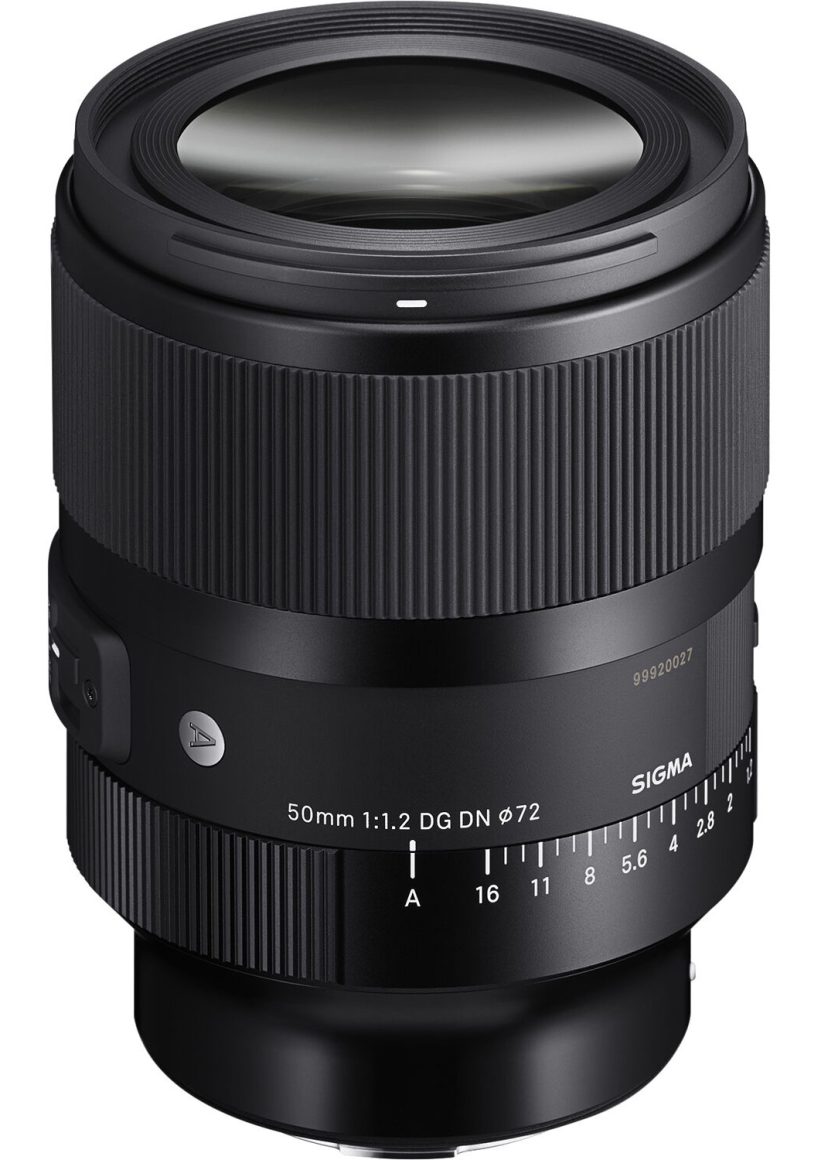
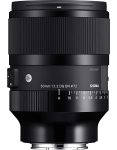
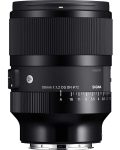





![Sigma 45mm F/2.8 DG [DN] | C](https://lens-db.com/wp-content/uploads/2019/07/8523939062-141x150.jpg)
![Leica APO-Summicron-SL 50mm F/2 ASPH. [11185]](https://lens-db.com/wp-content/uploads/2019/08/1565858760_1500020-104x150.jpg)
![Leica Summicron-SL 50mm F/2 ASPH. [11193]](https://lens-db.com/wp-content/uploads/2023/02/1675845961_1749922-120x150.jpg)
![Sigma 50mm F/2 DG [DN] | C](https://lens-db.com/wp-content/uploads/2023/04/1680509813_IMG_1962385-132x150.jpg)
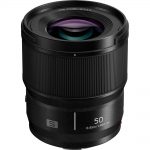
![Leica Summilux-SL 50mm F/1.4 ASPH. [11180]](https://lens-db.com/wp-content/uploads/2016/09/1474307116000_IMG_687501-150x150.jpg)
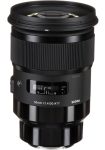

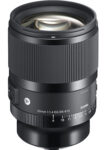






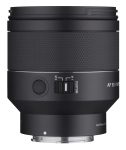
![Sony FE Carl Zeiss Sonnar T* 55mm F/1.8 ZA [SEL55F18Z]](https://lens-db.com/wp-content/uploads/2013/10/SEL55F18Z-112x150.jpg)
![Sony FE 50mm F/1.8 [SEL50F18F]](https://lens-db.com/wp-content/uploads/2016/03/1459265698000_1242613-150x150.jpg)
![Sony FE ZEISS Planar T* 50mm F/1.4 ZA SSM [SEL50F14Z]](https://lens-db.com/wp-content/uploads/2016/07/1468248155000_1264965-150x150.jpg)
![Sony FE 50mm F/1.2 GM [SEL50F12GM]](https://lens-db.com/wp-content/uploads/2021/03/1615895153_1630079-150x150.jpg)
![Sony FE 50mm F/2.5 G [SEL50F25G]](https://lens-db.com/wp-content/uploads/2021/03/1616495752_1630082-150x150.jpg)
![Sony FE 50mm F/1.4 GM [SEL50F14GM]](https://lens-db.com/wp-content/uploads/2023/02/1676974518_1752166-121x150.jpg)

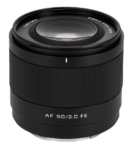
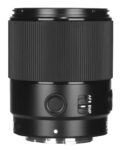
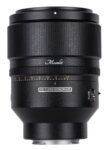
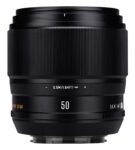

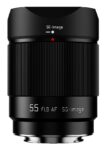

![Sony E 50mm F/1.8 OSS [SEL50F18]](https://lens-db.com/wp-content/uploads/2012/07/sony-e-50-18-125x150.jpg)





![Yongnuo 50mm F/1.8 DA DSM [II]](https://lens-db.com/wp-content/uploads/2020/04/DA50F18-07-138x150.png)
